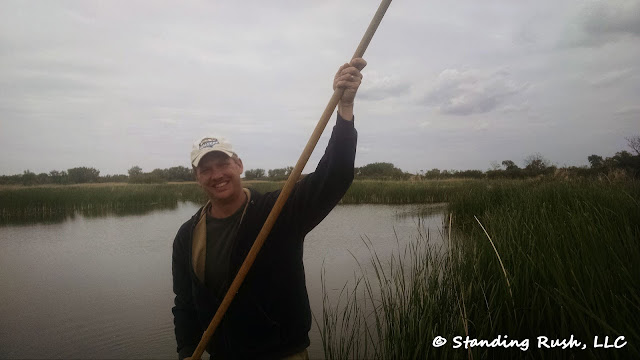 |
| What may appear on first blush to be tranquil and serene now amounts to the single largest vegetative management challenge on Lake Erie coastal marshes (and beyond). It may present the biggest management challenge, period. |
So, let's recap a bit. A bug can create problems (emerald ash borer) and a bug can solve problems (loosestrife beetles), but one common thread and nearly universal truth already developing is that
invasive species tend to be a major problem with far-reaching negative consequences. Therefore, invasive species, particularly plant species, are central to both the marsh landscape and the management of the landscape. To continue the tale then, we move to the next chapter.
Just as researchers and managers on the ground were starting to make headway via the
Galerucella beetle and purple loosestrife was starting to show a chink in the armor (late 1990s in the Western Basin), yet another aggressor,
Phragmites australis, or "Phrag" as it is affectionately referred to by many
, was on deck as the next big invader.
To understand why this invasive was poised to fill any void, the role of water levels should be briefly explained. One common refrain that I'll do my best not to repeat
ad nauseum is that
water levels -- and the timing and extent of water level fluctuations -- are the engine that drives most all other living things in the marsh. Even an inch or two more or less can mean all the difference as to what plants grow (or don't grow) . . . and the resulting plant diversity (or monoculture) has a profound domino effect on everything else that might visit or rely on the resulting vegetative community.
It is also important to understand that Lake Erie -- and all the Great Lakes, for that matter -- have historically undergone cyclical swings in basin-wide water levels, typically measured over decades. The southwestern Lake Erie region had undergone a significant spike aptly referred to as "high water years" in the early 1970s, but by 2000, Great Lakes water levels had returned to long-term averages. As water levels continued to drop, the table was set for "Common Reed" (
P. australis) to become entirely too common.
While there is (or at least was) a native taxa, the Phrag that quickly began forming dense thickets of vegetation unsuitable for any other native fauna was another Eurasian import. The unusually broad growth tolerances in terms of water levels (moist soils to water depths of more than 3' -- unheard of by native species) along with the rapid expansion of above ground biomass (up to 20' horizontally per year) -- meant that Phrag could block light to other plants in an evolutionary instant and convert a broad range of wetland habitats into a
Phragmites monoculture very quickly.
And convert it did. Consider further that Phrag can grow up to 20' tall (8-12' on average in Bay View) and so thick that a grown adult is hard-pressed to walk through it, and it becomes clear why Phrag quickly became a force to be reckoned with. At it's worst,
Phragmites may have covered 25% of Standing Rush property. The only reason it didn't press further was (1) it was in a turf war with loosestrife early on, and (2) water levels could be intentionally kept high enough, long enough, that Phrag could only go so far.
This is a chapter with many subplots, so more on the oh-so COMMON reed will most certainly follow.






